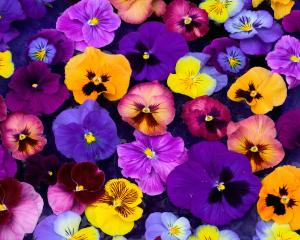Sweetly scented vireya rhododendrons are in flower, a rather pungent smell comes from the curious flowers of Aristolochia ringens, and the Heliotropium arborescens in the central house has an unusual sweet vanilla-like scent, or, as one of the common names suggests, of cherry pie.
Heliotropium belongs to the borage family (Boraginaceae) and is from Peru and Ecuador in South America. It is also sometimes referred to as fragrant heliotrope or just heliotrope.
Fragrant heliotrope is a small evergreen shrub that reaches about 1m high and 1m wide.
The wrinkled leaves are oblong in shape, covered in fine hairs and have a wavy margin.
The flowers are hermaphrodite (they have male and female parts) and vary in colour from violet and lilac through to creamy white.
Bees, butterflies and moths will all pollinate the flowers, so it is a useful plant for attracting butterflies into the garden.
Fragrant heliotrope will tolerate a range of soils, from light and sandy to heavy clay, but this plant resents drying out between waterings and will drop lower leaves if it does. However, too much water will decrease the scent of the flowers. Plants prefer to be sited in full sun or light shade otherwise they become long and leggy.
These plants need protection from temperatures below 5degC so are best grown in Dunedin as a house plant or as an annual outside in a sunny location or in a hanging basket.
A homeopathic remedy is made from the whole plant and is used to treat clergyman's sore throat. Essential oil is also obtained from the flowers and used in perfumes.
Propagation can be done from either seed or cuttings.
Seeds should be sown in spring with greenhouse protection and a temperature of about 20degC.
Softwood cuttings can be taken in late spring or early summer. - Stephen Bishop
Stephen Bishop is curator of the Winter Garden glasshouse at Dunedin Botanic Garden.












